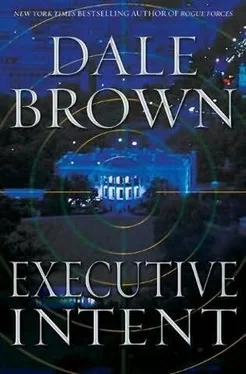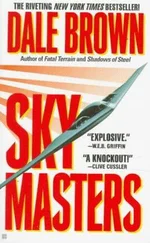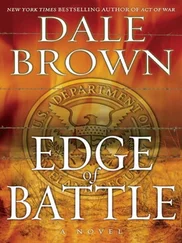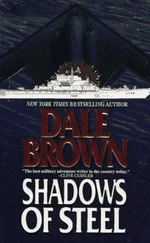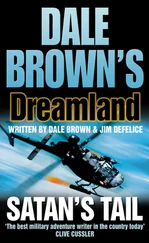The Japanese Maritime Self-Defense Force’s Atago-class destroyer Ashigara was in the first month of a three-month-long routine patrol of the Sea of Okhotsk and western Bering Sea. The destroyer was an improved Japanese version of the American Navy’s DDG-51 Arleigh Burke-class destroyer, with Japanese-made defensive weaponry as well as American-made weapons, the AN/SPY-1D Aegis radar system, and fore and aft vertical-launch-system cells with surface-to-air and ASROC rocket-propelled torpedoes; the big difference was its full helicopter hangar along with its landing pad. It was one of the world’s most powerful warships and was well suited for the usually harsh winter weather conditions of the Bering Sea.
The Japanese navy, along with the United States and other Pacific countries, made regular patrols in the area not only to show that they were not shy about operating so close to Russian shores, but to plot and observe all the military activity and listen in to the variety of electronic signals being broadcast in the area. The Russian Pacific Fleet had a major submarine and naval aviation base at Petropavlovsk-Kamchatsky, about three hundred miles south, with Delta-III nuclear ballistic-missile submarines and Akula attack submarines, Tupolev-142 naval attack bombers, and Mikoyan-Gureyvich-31 long-range interceptors based there. In fact, the Ashigara had made a weeklong port call to Petropavlovsk-Kamchatsky naval base and had been warmly welcomed by the Russians. But the Ashigara’s objective on this part of the cruise was three hundred miles north of Petropavlosk-Kamchatsky: the Klyuchi Test Range, an isolated part of the northern Kamchatka Peninsula, heavily instrumented and used to record the accuracy of reentry warheads carried aloft by intercontinental ballistic missiles launched from western Russia.
A lot of activity had been observed in and around the Klyuchi Test Range in recent weeks. The United States made regular ship and air patrols of the test range, and the long-range COBRA DANE radar at Eareckson Air Station on Shemya Island also kept watch, but since the Ashigara was already in the area, it was diverted to cruise the area and observe.
Instead of reentry vehicles, the crew of the Ashigara were observing numerous fighter sorties in the Klyuchi Test Range. Yelizovo Airfield at Petropavlovsk-Kamchatsky had a regiment of MiG-31 “Foxhound” supersonic fighters, designed to intercept lowflying bombers and cruise missiles hundreds of miles from shore at over twice the speed of sound. The MiGs were not dogfighters, but instead used large, powerful radars to launch advanced radar-guided air-to-air missiles…except the MiGs in the Klyuchi Test Range weren’t practicing attacking bombers, but were simply cruising out to the range, climbing steeply, then heading back to Yelizovo.
The Ashigara soon found out what the MiGs were up to. As the captain and combat officers of the Japanese destroyer watched in fascination, one MiG-31 accelerated to over two and a half times the speed of sound, then made a steep climb. The fighter roared to over sixty-five thousand feet at just over the speed of sound, then released a single missile slung under its belly centerline stores station.
The missile was a 50N8 Graza, or “Storm,” long-range surface-to-air missile, modified as an air-launched antisatellite weapon. The Russian antisatellite missile climbed quickly on its first-stage motor for about fifteen seconds, climbing to over 200,000 feet, then coasted for a short period as it dropped its first-stage motor section. The second stage ignited moments later, and the missile quickly climbed to five hundred miles’ altitude before the second stage separated.
Because it did not have enough speed to enter Earth’s orbit, the third stage began to descend. At four hundred miles’ altitude, the third stage separated, leaving the kill vehicle to continue the descent. Using short blasts of hydrazine, it adjusted its course using inertial, GPS, and datalink course guidance; then, as it closed in on its target, it used its own radar for precise terminal guidance. It scored a direct hit on a deactivated Yantar-4K2 target reconnaissance satellite just minutes later.
MEMORIAL CHAPEL, STANFORD UNIVERSITY, PALO ALTO, CALIFORNIA
LATER THAT AFTERNOON
“I’d like to conclude with these words,” Vice President Ken Phoenix said. “It was found written on a slip of paper in a trench in Tunisia during the battle of El Agheila during World War Two, but it is just as appropriate here today as we honor the memory and the extraordinary life of First Lieutenant Jeffrey McCallum, U.S. Space Defense Force. It read: ‘Stay with me, God. The night is dark, the night is cold: my little spark of courage dies. The night is long; be with me, God, and make me strong.’ Rest in peace, Lieutenant. Job well done.”
After the service concluded, the vice president followed along with the pastor and family members as the pallbearers wheeled the casket to the front of the chapel, and then the Air Force honor guard carried the casket to the waiting hearse. The family had requested that the burial at Holy Cross Cemetery in Menlo Park be for family only, so the vice president waited at the bottom of the steps as the hearse and cars for the family departed. He greeted hundreds of students, faculty, and other mourners who had attended the service, then was escorted to his armored Cadillac limousine.
Already in the car were Patrick McLanahan in the left forward-facing seat and Ann Page, Kai Raydon, and Hunter Noble in the aft-facing seats. “Thank you for attending the service, Mr. Vice President,” Patrick said once they were all seated and the motorcade headed toward Phoenix ’s hotel in San Jose. “I know the family appreciates your visit very much.”
“Thank you, Patrick,” Phoenix said. He patted Patrick on the shoulder. “It’s good to see you again after Iraq. I had some doubts we’d get out of there alive.”
“Same here, sir.” Patrick had been a private contractor working in Iraq when the Turkish army invaded northern Iraq, and he and the vice president, who was there as part of a cease-fire-negotiating team, were trapped near Mosul as the fighting intensified.
“I’d like to get my hands on whoever leaked the details of the accident and McCallum’s actions to the press,” Ann Page said bitterly. “McCallum was an American astronaut, but the press has been calling him incompetent and cowardly, even before the poor guy was buried.”
“Unfortunately, a lot of the radio transmissions from space were unsecure and easily intercepted,” Kai Raydon said, “so anyone with a big enough dish could have picked them up.”
“The only other people who knew were either in the Pentagon or the White House,” Phoenix said, “and if it was from either of those places, I’ll find out, and then I’ll let you have first crack at them, Secretary Page.” Ann nodded, and her expression left little doubt that she was looking forward to that moment. “General Raydon, what’s the latest on the Kingfisher explosion?”
“Nothing definite yet, sir,” Kai said. “We did find a closed arming circuit, so we’re going over the entire arming system to find out why that circuit was closed. The boards that McCallum replaced initially reported in the green when the garage was powered up, but then the circuits closed and the thing blew.”
“You’ve got to find out what happened, General, as quickly as possible, if you want your program to survive,” Phoenix said. “The president already wants the ground-attack weapons removed from the garages, and he’s thinking about a unilateral moratorium on antisatellite weapons ahead of a global initiative to ban antisatellite weapons completely.”
“Ban all antisatellite weapons? Even defensive ones?”
“Unless we figure out a foolproof way to distinguish defensive from offensive weapons, yes,” Phoenix replied. “We’ve got China, Russia, and other countries like Pakistan complaining about weapons in space, and both China and Russia racing each other to test out a new antisatellite weapon. The Russians fired off an air-launched antisatellite missile earlier today, timed so that it could be observed by a Japanese Aegis warship.”
Читать дальше
